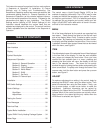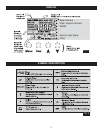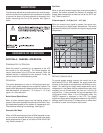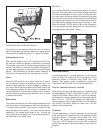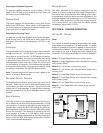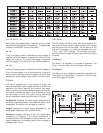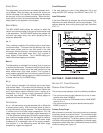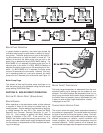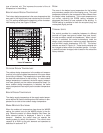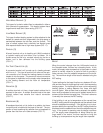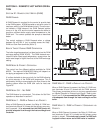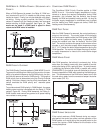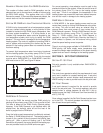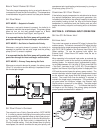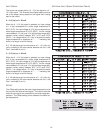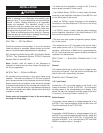
type of terminal unit. This improves the control of the air
temperature in the building.
BOILER INDOOR DESIGN TEMPERATURE
The indoor design temperature is the room temperature that
was used in the original heat loss calculations for the build-
ing. This setting establishes the beginning of the character-
ized heating curve, see Figure 15 below.
OUTDOOR
DESIGN TEMPERATURE
The outdoor design temperature is the outdoor air tempera-
ture that is the typical coldest temperature of the year where
the building is located. This temperature is used when doing
the heat loss calculations for the building. If a cold outdoor
design temperature is selected, the boiler supply tempera-
ture rises gradually as the outdoor temperature drops. If a
warm outdoor design temperature is selected, the boiler
supply temperature rises rapidly as the outdoor temperature
drops.
BOILER DESIGN TEMPERATURE
The design supply temperature is the supply water temper-
ature required to heat the building when the outdoor air tem-
perature is as cold as the outdoor design temperature.
W
ARM WEATHER SHUTDOWN
When the outdoor air temperature rises above the WWSD
setting, the control turns on the WWSD pointer in the dis-
play. When the control is in Warm Weather Shut Down, the
boiler demand pointer is displayed if there is a boiler
demand. However, the control does not operate the
heating system to satisfy this demand. The control does
respond to a DHW or set point demand and operates as
described in sections E & F.
ROOM
The room is the desired room temperature for the building
and provides a parallel shift of the heating curve. The room
temperature desired by the occupants is often different from
the design indoor temperature. If the room temperature is
not correct, adjusting the ROOM setting increases or
decreases the amount of heat available to the building. A
ROOM setting is available for both the occupied (day) and
unoccupied (night) periods.
TERMINAL UNITS
The control provides for a selection between six different
terminal unit types: two types of radiant floor heat, fancoil,
fin-tube convector, radiator and baseboard. When a termi-
nal unit is selected, the control automatically loads the
design supply temperature, maximum supply temperature,
and minimum supply temperature (FIG. 16). The factory
defaults are listed in Figure 16. These factory defaults can
be changed to better match the installed system. If a facto-
ry default has been changed, refer to section A to reload the
factory defaults.
BOIL DSGN
BOIL IND
FIG. 15
10



